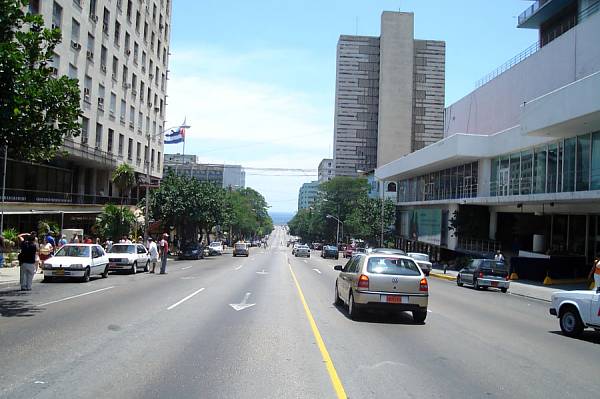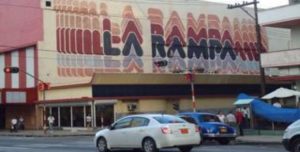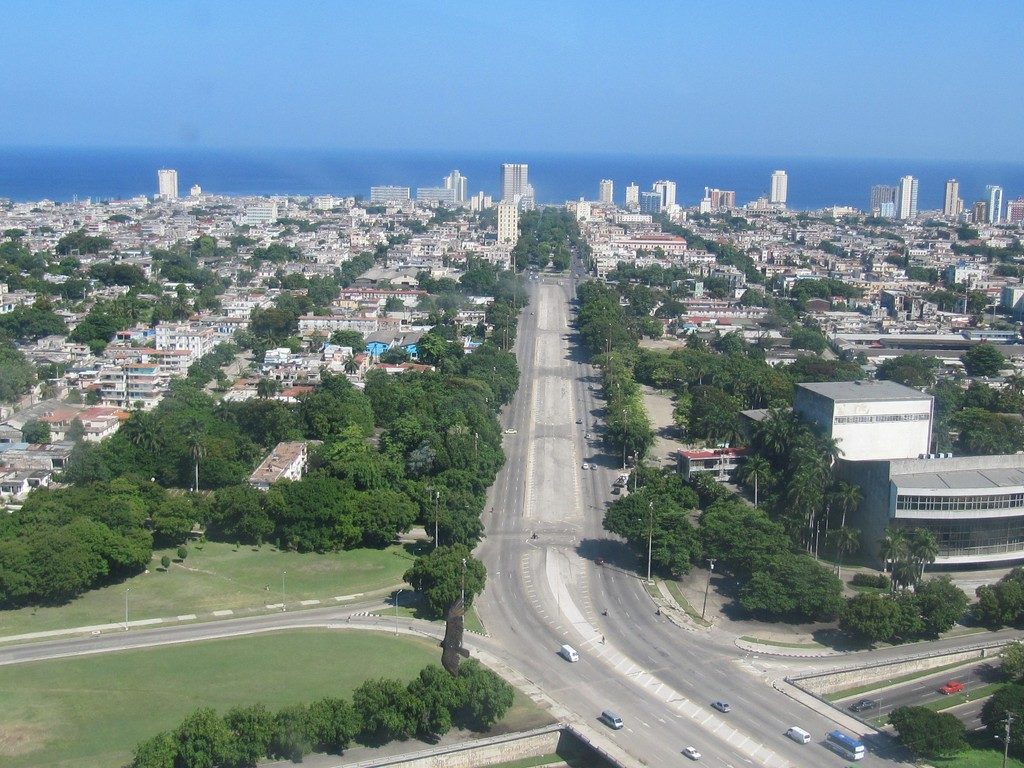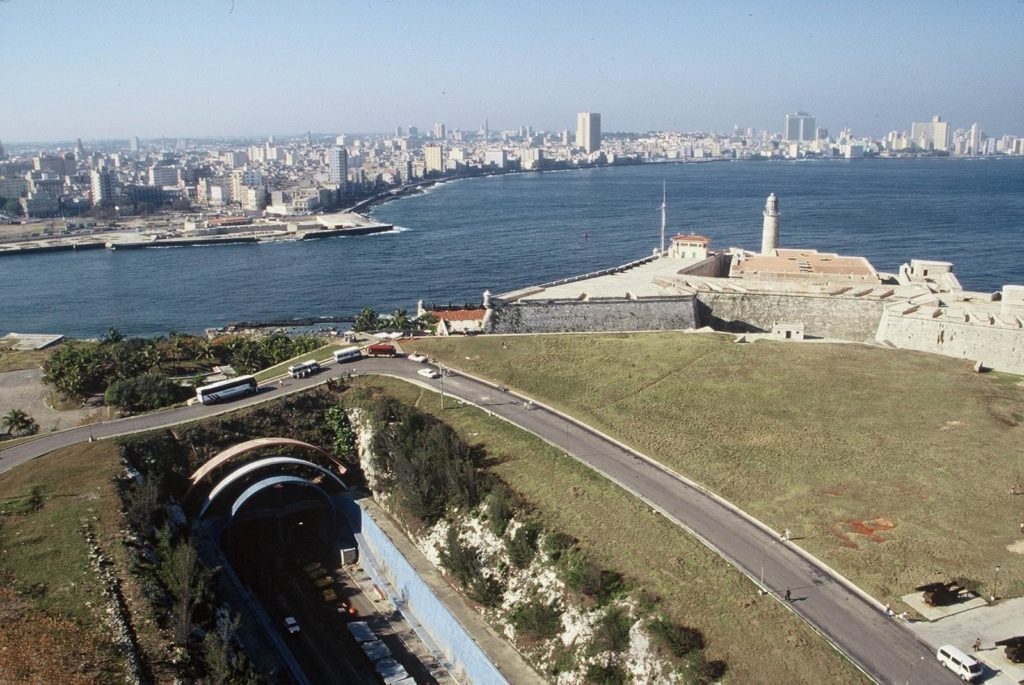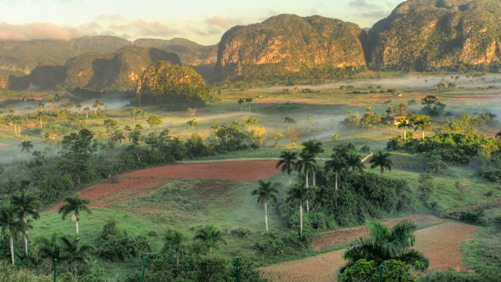If any habanero is asked where he situates the heart of the city, he will respond without hesitation that in La Rampa. That piece of street that stretches along 500 meters along Avenida 23 in Vedado, from the Coppelia ice cream parlor to the sea, is the most central and crowded of the capital. The ideal place for the walk, the date of love, the meeting of work, the distraction … This has happened during the last 60 years, in which La Rampa became, next to the Malecón, in the most cosmopolitan place of the city.
To go to La Rampa, to meet in this one, are customs of the Cubans, as well as it is to take it like point of reference to take way later to other places. There are many ways to tour Havana. One may be to follow the path that marks history here. Another is to do it freely with stops in those places that deserve a stop along the way. That is what, with La Rampa as a starting point, we will, as a proposal, in the pages that follow.
Various Styles
There is so much insistence on the values of colonial Havana that one runs the risk of assuming that the rest of the city does not have them. Of modern Havana the best is the Vedado, the greatest achievement of Cuban urbanism. With the establishment of the Republic (1902) that neighborhood acquired an unusual height. Already the University had settled in her and the lords of ancestry and the new rich had constructed their residences in the zone.
Then an eclectic modality was imposed in the architecture that reached its best exponents in the house where the Union of Writers and Artists of Cuba resides, the mansion that houses the Museum of Decorative Arts and the auditorium Amadeo Roldán. The Casa de la Amistad is genuinely Florentine style, and neobarroca is the house where the café-restaurant 1830 is located, next to the mouth of the Almendares river.
Although there were some high buildings in the capital, it is in the Vedado where there is a proliferation of skyscrapers – almost never more than 20 stories. The Hotel Nacional (1930) however has only eight levels, but – with its Plateresque Spanish style – was the first hotel installation of real luxury that the city had. Shortly afterwards, the López Serrano apartment building was built in an art deco style, which was the highest in Havana until the 1950s.
It is at this time that the Vedado is reborn. La Rampa, more than a street, begins to become a state of mind; large hotels -Rosa de Hornedo, Capri, Riviera, Habana Hilton- and buildings such as the Dental Retreat and the Medical Retirement mark very valuable points in Cuban architecture. To these is united the building Focsa, one of the highest constructions of the country, and marvel of the Cuban civil engineering.
THE TUNNEL.
It is, without discussion, “the work of the century” in Cuba. It is considered one of the seven wonders of Cuban civil engineering and a scholar like Jacques Boudet includes it among the great works of humanity. Indeed, in his book The Great Works of Mankind (London, 1961) appears the Tunnel of Havana next to the city of Machu Picchu and the Alhambra of Granada, the Great Chinese wall and the Forbidden City, the transatlantic cable and the Channel of Suez, the Brooklyn Bridge and the modernization of Moscow … For the first time an underwater viaduct was constructed that way and its project and its technology would revolutionize the world of the constructions.
To make this possible 250,000 cubic meters of rock and more than 100,000 cubic meters of sand were dredged. It has an extension of 733 meters and a width of 22 meters and its four lanes were designed to allow the transit of 1 500 vehicles per hour in both directions. The tubes or crates that made it were built in a dry dock and then moved by flotation to be sunk in the bottom of the channel of the bay habanera, where previously had dug the trench where they would be deposited.
The Havana Tunnel was inaugurated on May 31, 1958, after three years of work, and with the work was realized the desire to link quickly and conveniently to Havana with what was then called the City of This and a rosary of enchanting beaches with its white sands and crystal clear waters. It is enough to cross the sea under the sea and that is done in a matter of seconds.
UN RECORRIDO POR LA HABANA, LA RAMPA, EL TUNEL.
Si se le pregunta a cualquier habanero dónde sitúa el corazón de la urbe, responderá sin vacilar que en La Rampa. Ese pedazo de calle que se extiende a lo largo de 500 metros por la avenida 23 en el Vedado, desde la heladería Coppelia hasta el mar, es lo más céntrico y concurrido de la capital. El sitio ideal para el paseo, la cita amorosa, el encuentro de trabajo, la distracción… Así ha sucedido a lo largo de los últimos 60 años, en los que La Rampa se convirtió, junto al Malecón, en el lugar más cosmopolita de la ciudad.
Ir a La Rampa, reunirse en esta, son costumbres de los cubanos, como también lo es tomarla como punto de referencia para emprender camino después hacia otros sitios. Hay muchas maneras de recorrer La Habana. Una puede ser la de seguir el derrotero que marca aquí la historia. Otra es hacerlo a libre arbitrio con paradas en aquellos lugares que merezcan un alto en el camino. Eso es lo que, con La Rampa como punto de partida, haremos, a modo de propuesta, en las páginas que siguen.
Estilos diversos
Se insiste tanto en los valores de La Habana colonial que se corre el riesgo de suponer que el resto de la ciudad no los tiene. De La Habana moderna lo mejor es el Vedado, logro mayor del urbanismo cubano. Con la instauración de la República (1902) esa barriada adquirió auge inusitado. Ya la Universidad se había instalado en ella y los señores de abolengo y los nuevos ricos hicieron construir sus residencias en la zona.
Se impuso entonces una modalidad ecléctica en la arquitectura que alcanzó sus mejores exponentes en la casa donde radica la Unión de Escritores y Artistas de Cuba, el palacete que alberga el Museo de Artes Decorativas y el auditórium Amadeo Roldán. Es de estilo genuinamente florentino la Casa de la Amistad, y neobarroca la casona donde está instalado el café-restaurante 1830, junto a la desembocadura del río Almendares.
Aunque existían en la capital algunos edificios altos, es en el Vedado donde prolifera el afán de los rascacielos —casi nunca mayores de 20 pisos. El Hotel Nacional (1930) sin embargo tiene solo ocho niveles, pero —con su estilo plateresco español— fue la primera instalación hotelera de verdadero lujo de que dispuso la ciudad. Poco después se construía el edificio de apartamentos López Serrano, de estilo art decó, que fue el más alto de La Habana hasta la década de los 50.
Es por esta época en que el Vedado vuelve a renacer. La Rampa, más que una calle, comienza a convertirse en un estado de ánimo; se inauguran grandes hoteles —Rosita de Hornedo, Capri, Riviera, Habana Hilton— y edificios como los del Retiro Odontológico y el Retiro Médico marcan puntos muy valiosos en la arquitectura cubana. A estos se une el edificio Focsa, una de las construcciones más altas del país, y maravilla de la ingeniería civil cubana.
EL TUNEL.
Es, sin discusión, «la obra del siglo» en Cuba. Se le considera una de las siete maravillas de la ingeniería civil cubana y un estudioso como Jacques Boudet la incluye entre las grandes obras de la humanidad. En efecto, en su libro The Great Works of Mankind (Londres, 1961) aparece el Túnel de La Habana junto a la ciudad de Machu Picchu y el Alhambra de Granada, la Gran Muralla china y la Ciudad Prohibida, el cable trasatlántico y el Canal de Suez, el puente de Brooklyn y la modernización de Moscú… Por primera vez un viaducto submarino se construía de esa forma y su proyecto y su tecnología revolucionarían el mundo de las construcciones.
Para hacerlo posible se dragaron 250 000 metros cúbicos de roca y más de 100 000 de arena. Tiene una extensión de 733 metros y un ancho de 22 metros y sus cuatro carriles se diseñaron para permitir el tránsito de 1 500 vehículos por hora en ambas direcciones. Los tubos o cajones que lo conforman se construyeron en un dique seco y luego se trasladaron por flotación para ser hundidos en el fondo del canal de la bahía habanera, donde previamente se había excavado la zanja donde se depositarían.
El Túnel de La Habana se inauguró el 31 de mayo de 1958, después de tres años de trabajo, y con la obra se hacía realidad el anhelo de enlazar de una manera rápida y cómoda a La Habana con lo que entonces se llamaba la Ciudad del Este y un rosario de playas de encantamiento con sus arenas blancas y aguas cristalinas. Basta con atravesar bajo el mar la rada habanera y eso se hace en cuestión de segundos.
Agencies/Ciro Bianchi/Juv. Rebelde/Internet Photos/ Arnoldo Varona/ TheCubanHistory.com
THE CUBAN HISTORY, HOLLYWOOD.



